Tutorial T1:
Time: 17th DEC, 2017 09.30 AM – 11.00 AM*
“Cloud Based Malware Mitigation Techniques for Securing Internet of Things Environment”
Abstract: Internet of Things, popularly known as IoT, is the intelligent connectivity of physical devices. IoT helps in increasing the level of communication and thereby productivity across organizations worldwide. Internet of Things, as an environment, has its own specific security requirements. With the growing significance of IoT, security and privacy concerns are also increasing. Among the various attacks prevalent in IoT, the Distributed Denial of Service (DDoS) attack has the maximum potential to play havoc in the IoT system. One of the common ways in which an attacker can launch DDoS in IoT is through malwares. Traditional approaches of malware detection and analysis do not suit the IoT environment as IoT is a constrained network. IoT devices are treated as soft targets as it does not require much to exploit an embedded device. Several malware variants are exploiting device vulnerabilities. Though launching DDoS attacks is the main purpose of IoT malware, the attackers in future might as well aim for crypto-currency mining, information stealing, and network reconnaissance. In this tutorial, we discuss the challenges of designing mitigation techniques for IoT malware and the cloud-based deployment of these techniques.
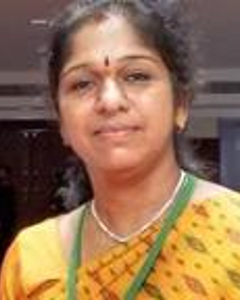 Speaker: Dr. G Geetha kumari, Professor, BITS Pilani, Hyderabad.
Speaker: Dr. G Geetha kumari, Professor, BITS Pilani, Hyderabad.
Bio: Dr G Geethakumari is a faculty with the Department of Computer Science, BITS Pilani, Hyderabad Campus. She worked at the National Institute of Technology, Warangal, prior to taking up faculty position in BITS. She received Ph.D. in Computer Science from University of Hyderabad. Her Ph.D. thesis was titled “Grid Computing Security through Access Control Modelling”. She has many international publications to her credit. Her present areas of research include information security, cloud forensics, OSN security and IoT security concerns. She has successfully executed a sponsored project titled “Design and Development of Digital Forensic Tools for Cloud IaaS”, funded by MEITY, Govt. of India, recently. The performance of the toolkit was appreciated by the user agencies. She has guided four Ph.Ds. and has been in the forefront of technical activities at BITS-Pilani, Hyderabad Campus. She is an IEEE Member and IEEE Computer Society Member. She has organized various events like the “Symposium on Cloud Computing and Digital Forensics (SoC-D 2015)” and “Unveiling CFIT: Cloud Forensic Investigator Toolkit – A Technology Showcase” at BITS Pilani, Hyderabad Campus. She has given many guest lectures and tutorial sessions on topics in emerging areas such as Internet of Things (IoT) security, cloud forensics and cloud security. She has served as a reviewer/TPC member for various IEEE/ACM conferences and several journals.
Tutorial T2:
Time: 17th DEC, 2017 11.30 – 02.00 PM*
“Visible Light Communication: Applications, Architecture, Standardization and Research Challenges”
Abstract: The indoor lighting is going through a revolution. The incandescent bulb that has been widely used to lit our surroundings since its invention over a century ago is slowly being phased out due to its extremely low energy efficiency. Even in the most modern incandescent bulbs, no more than 10% of the electrical power is converted to useful emitted light. The compact fluorescent bulbs introduced in 1990s have gained increasing popularity in the last decade as they provide better energy efficiency (more lumens per watt). However, recent advancements in solid-state lighting through Light Emitting Diodes (LEDs) have enabled unprecedented energy efficiency and luminaire lifespan. Average luminous efficacy (how much electricity is used to provide the intended illumination) of best-in-class LEDs is as high as 113 lumens/watt in 2015, and is projected to be around 200 lumens/watt by the year 2020. This is a many fold increase compared to current incandescent and fluorescent bulbs which provide an average luminous efficacy of 15 and 60 lumens/watt respectively. Similarly, the lifespan of LEDs ranges from 25,000 to 50,000 hours significantly higher than compact fluorescent (10,000 hours). Apart from the energy savings and lifespan advantages, the LEDs also have other benefits like compact form factor, reduced usage of harmful materials in design and lower heat generation even after long period of continuous usage. Due to these benefits, LED adoption is on a consistent rise and it is expected that nearly 75% of all illumination will be provided by LEDs by the year 2030.
The rapid increase in the usage of LEDs has provided a unique opportunity. Different from the older illumination technologies, the LEDs are capable of switching to different light intensity levels at a very fast rate. The switching rate is fast enough to be imperceptible by a human eye. This functionality can be used for communication where the data is encoded in the emitting light in various ways. A photo detector or an image sensor (matrix of photodiodes) can receive the modulated signals and decode the data. This means that the LEDs can serve dual purpose of providing illumination as well as communication. In last couple of years, VLC research has shown that it is capable of achieving very high data rates (nearly 100 Mbps in IEEE 802.15.7 standard and up to multiple Gbps in research). The communication through visible light holds special importance when compared to existing forms of wireless communications. First, with the exponential increase of mobile data traffic in last two decades has identified the limitations of RF-only mobile communications. Even with efficient frequency and spatial reuse, the current RF spectrum is proving to be scarce to meet the ever-increasing traffic demand. Compared to this, the visible light spectrum which includes hundreds of terahertz of license free bandwidth is completely untapped for communication. The Visible Light Communication (VLC) can complement the RF-based mobile communication systems in designing high-capacity mobile data networks. Second, due to its high frequency, visible light cannot penetrate through most objects and walls. This characteristic allows one to create small cells of LED transmitters with no inter- cell interference issues beyond the walls and partitions. It can also increase the capacity of available wireless channel dramatically. The inability of signals to penetrate through the walls also provides an inherent wireless communication security. Third, VLC facilitates the reuse of existing lighting infrastructure for the purpose of communication. This means that such systems can be deployed with relatively lesser efforts and at a lower cost.
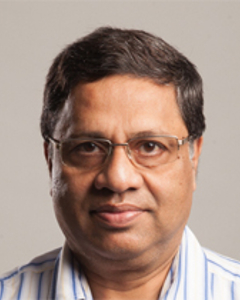 Speaker: Anand Srivastava, Professor, Electronics & Communication Engineering, IIIT- Delhi.
Speaker: Anand Srivastava, Professor, Electronics & Communication Engineering, IIIT- Delhi.
Bio: Dr. Anand Srivastava is a Professor in the Department of Electronics & Communication engineering, IIIT-Delhi. His areas of interest include high speed optical access networks including long-reach broadband access network, Optical access network architecture, design, control, and management, Future PON architectures, including WDM-PON, OFDMA-PON and Hybrid PONs, Energy efficient optical access networks. Prior to joining academia, he was with Alcatel-Lucent-Bell Labs, India and Center for Development of Telematics (CDOT), a telecom research center of Govt. of India During his stint with CDOT of nearly two decades, he was responsible for development of national level projects for Indian Telecom in the areas of Telecom Security Systems, Network Management System, Intelligent Networks, Operations Support Systems, Access Networks (GPON) and Optical Technology based products. Majority of these projects were completed successfully and commercially deployed in the public network. He also carried out significant research work in the Photonics Research Lab, Nice, France,
under the Indo-French Science & Technology Cooperation Program on “Special optical fibers and fiber based components for optical communications” during the project duration (2007-2010). He was also closely involved with ITU-T, Geneva in Study Group 15 and represented India for various optical networking standards meetings.
Tutorial T3:
Time: 17th DEC, 2017 03.15 PM – 04.45 PM*
“IoT Protocols for Present and Future Smart Applications – Performance and Implementation”
Abstract: In the recent past, the Internet of Things (IoT) has been a subject of worldwide and intense activity by the research and business communities through the design and development of IoT systems. They target a very large variety of applications including Smart Home, Smart Cities, eHealth, monitoring and control of Cyber-Physical Systems like Smart Grid and industrial plants.
The proposed half-day tutorial will provide a unified view of IoT implementation landscape including protocols (IEEE, 3GPP, IETF, LORA, ZigBee) and technical building blocks such as Embedded OSs and platforms. Wireless communication protocols for small cell (e. g IEEE 802.15.4xx and IEEE 802.11ac&ah) and large cell IoT networks (e. g LTE–CatM; NB-IoT) operating in the “License Exempt” and “Licensed” bands respectively will be discussed. Additionally, the IETF suite of Networking and Application layer protocols (6LoWPAN; ROLL; CoAP – mandatory for efficient operation of resource constrained devices such as sensors) will be presented. Description of special case of LPWAN type of large cell networks (LoRA, Sigfox), implemented using the License Exempt bands initially foreseen for Short Range Devices and the mention of importance of Spectrum Regulations (in three ITU Regions) will complete this discussion.
Further, a chapter on ‘IoT in Practice’ will be included. It will present a comparative study of embedded OS’s such as RIOT, Contiki, ARM Mbed, Zephyr as well as implementation specificities of IoT protocol stacks e.g. RPL/6LoWPAN. Insight on how do hardware and software building blocks and transport level and application level protocols fit together will be provided. Addressed practical issues include the analysis of actual protocol performance (e.g. 802.15.4 or LoRa stacks) in experimental settings, and topics such as reasons for adopting open source approaches for IoT solutions. Remarks and observations based on and the impact of scalability on 5G standardization will conclude the tutorial.
Short sessions of hands-on work on performance evaluation of a selected subset of protocols are expected to render the tutorial equally attractive for the experienced practicing engineers as for research experts from academia.
 Speaker 1: Dr Vinod Kumar, Director (Retd) Research in Wireless, Alcatel-Lucent Bell Labs, France
Speaker 1: Dr Vinod Kumar, Director (Retd) Research in Wireless, Alcatel-Lucent Bell Labs, France
Bio: Dr Vinod Kumar has 35+ years of R&D experience in mobile communication systems. During his 27year tenure in Alcatel-Lucent he initiated and contributed to multiple research projects in 2G to 5G technologies – GSM, GPRS, EDGE, UMTS, HSPA, LTE, LTE A, IoT and wireless sensor ad-hoc networking. He has been involved in standardisation and marketing support activities and in Patent Management related to above technologies. He has participated in multiple international collaborative projects (EC FP6, FP7) and has been Technical Auditor of CELTIC and ANR projects. He is a leading contributor to the activities of Wireless World Research Forum (WWRF) and holds Secretary and Treasurer positions.
Dr Kumar has been Visiting Professor for 25 years and teaches graduate courses in mobile communications in ENST (IMT Paris-Tech), CENTRALESUPELEC, ISEP, EURECOM in France and in MNIT in India. He was Associate Professor at the University de Marne la Vallee in France for six years. He has acted as member of Industrial Advisory Board of CTIF Denmark, of Conseil Technique of SUPELEC-France and of the joint INRIA-Bell Labs research lab. He has widely lectured on 5G and IoT at IEEE and WWRF events, has been guest editor and referee for IEEE publications and PhD guide and examiner with CentraleSupelec and INRIA. He has 80 + technical publications and 33 patents.
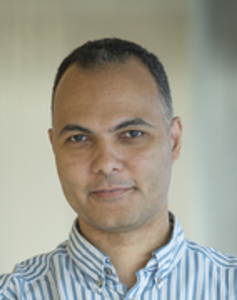 Speaker 2: Dr Cedric Adjih, Research Scientist, Inria, Université Paris-Saclay, France.
Speaker 2: Dr Cedric Adjih, Research Scientist, Inria, Université Paris-Saclay, France.
Bio: Cedric Adjih is research scientist at Inria Saclay, France, in the INFINE Team. He received his doctoral degree in 2001 from the University of Versailles (France). He graduated from the Ecole Centrale Paris (ECP) in 1994. His current interest is in IoT, and in the past 20 years, he has focused on multiple aspects of wireless multi-hop networks and (IoT networks, ad-hoc networks, mesh networks, sensor networks) e.g. performance evaluation, design, implementation and proof of concept demonstration. His IoT research topics include: information centric networking and coding (access, network coding). He is one of the co-authors of the OLSR protocol (for ad-hoc networks, IETF RFC 3626, RFC 5444 and others) and is active in standardisation (IRTF/IETF). Cédric Adjih has been involved in several projects, including: Equipex-FIT (2011-2019), a large scale open testbed (including IoT platforms, http://iot-lab.info/), RIOT (open source operating system for IoT, http://riot-os.org/), H2020 ARMOUR and AGILE (IoT related projects using FIT IoT-LAB and RIOT, for security and open gateways), and series of projects on multi-hop tactical military networks, such as GETRF (2011-2014). He is co-managing the Inria IoT-LAB site of Saclay where a 300+ node testbed for Internet of Things/Wireless Sensor Networks is installed.
Tutorial T4:
Time: 17th DEC, 2017 05:00 PM – 06.30 PM*
“Mobility Models and Impact of Mobility on Dynamic Networks”
Abstract: Mobility plays a central role in the performance of dynamic networks such as unmanned aerial networks, underwater networks, delay tolerant networks, etc., where topology is changing faster than the time-scale of packet delivery. Researchers therefore need to carefully select the mobility model while simulating or analyzing a network to measure its performance. Several mobility models have been proposed till date and they are still active areas of research, not only amongst the engineering community but also in other disciplines such as sociology, economics, etc. The prime challenge in proposing a “new” mobility model is, that it should be able to imitate the mobility patterns of real-life entities. For example, a human centric mobility model should have the characteristic of a person moving from one place to the other; or a vehicular mobility model should imitate the movement patterns of vehicles moving in a highway or within a city. Therefore, developing a mobility model requires a systematic study of movement of such real-life entities. To study mobility aspects of such real-life entities, scientists have devised means to collect mobility traces of such entities. Mobility consists of several parameters such as flight length, visit time, return time, contact time, inter-contact time, etc. where each parameter can be controlled to model a specific mobility. Therefore, an entirely new direction of research in the study of mobility has evolved in which scientists have tried to incorporate one or more of these parameters in their algorithm for simulating movement over a given closed geometrical area. A mobility model is effective, when it is able to incorporate most (if not all) of these parameters and their characteristic matches the nature of real-life mobility.
On the other hand, a systematic analysis of these mobility parameters can not only provide insights into the performance of dynamic networks but also help in designing informed protocols, which can lead to improved network performance. For example, the knowledge of the distribution of inter-contact time, can help in designing schemes for node sleep interval for energy preservation in dynamic networks. Therefore, a systematic analysis of such mobility parameters forms another important branch of research, in which researchers try to find the characteristics (such as distribution) of such parameters and determine how it affects the performance of a network.
Despite mobility being a classic area of research, there still exists several open issues, the trade-off being complexity of the model and the number of parameters to incorporate to make it more “realistic”. This tutorial will explore the body of research in a) the mobility models, b) mobility traces, and, c) effect of mobility on dynamic networks.
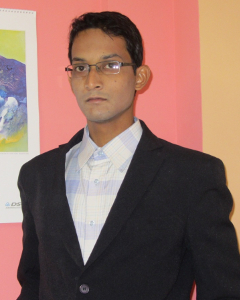 Speaker 1: Dr. Suvadip Batabyal, Professor, BITS Pilani, Hyderabad.
Speaker 1: Dr. Suvadip Batabyal, Professor, BITS Pilani, Hyderabad.
Bio: Dr. Suvadip Batabyal is an Assistant Professor in the Department of Computer Science & InformationSystems at BITS Pilani, Hyderabad Campus. He received his PhD. degree from Jadavpur University, Kolkata. He received the UGC-BSR fellowship for meritorious student (2012) for carrying out his PhD. His current research interests include wireless dynamic networks, network optimizations, cluster/grid computing and security in real-time systems. He has an industrial experience of more than 2 years in TCS, Kolkata. He has published around 15 papers in several peer-reviewed IEEE/ACM conferences and journals.
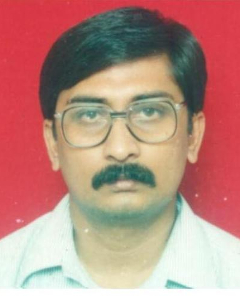 Speaker 2: Prof. Samiran Chattopadhyay, Professor, Jadavpur University, Kolkata.
Speaker 2: Prof. Samiran Chattopadhyay, Professor, Jadavpur University, Kolkata.
Bio: Prof. Samiran Chattopadhyay is a Professor in the Dept. of Information Technology at Jadavpur University. He did his B.Tech.and M.Tech from IIT Kharagpur and his PhD. from Jadavpur University. He was awarded the gold medal for holding a first position in M.Tech. He has an experience of several years in industry and has been associated with several industries over the years. He has published over 100 papers in several peer-reviewed IEEE/ACM conferences and journals. He has been a visiting academic at several European institutes such as Anglia Ruskin University, Cambridge, UK under Erasmus Mundus Project, EU and Northumbria University, Newcastle upon Tyne under TEQIP and cLINK project. His current research interests include Algorithms, Wireless Networks, Network Security, Intelligent Computing, Bio Informatics, Cloud Computing, and Distributed Computing.
*Date & Times are Tentative.


